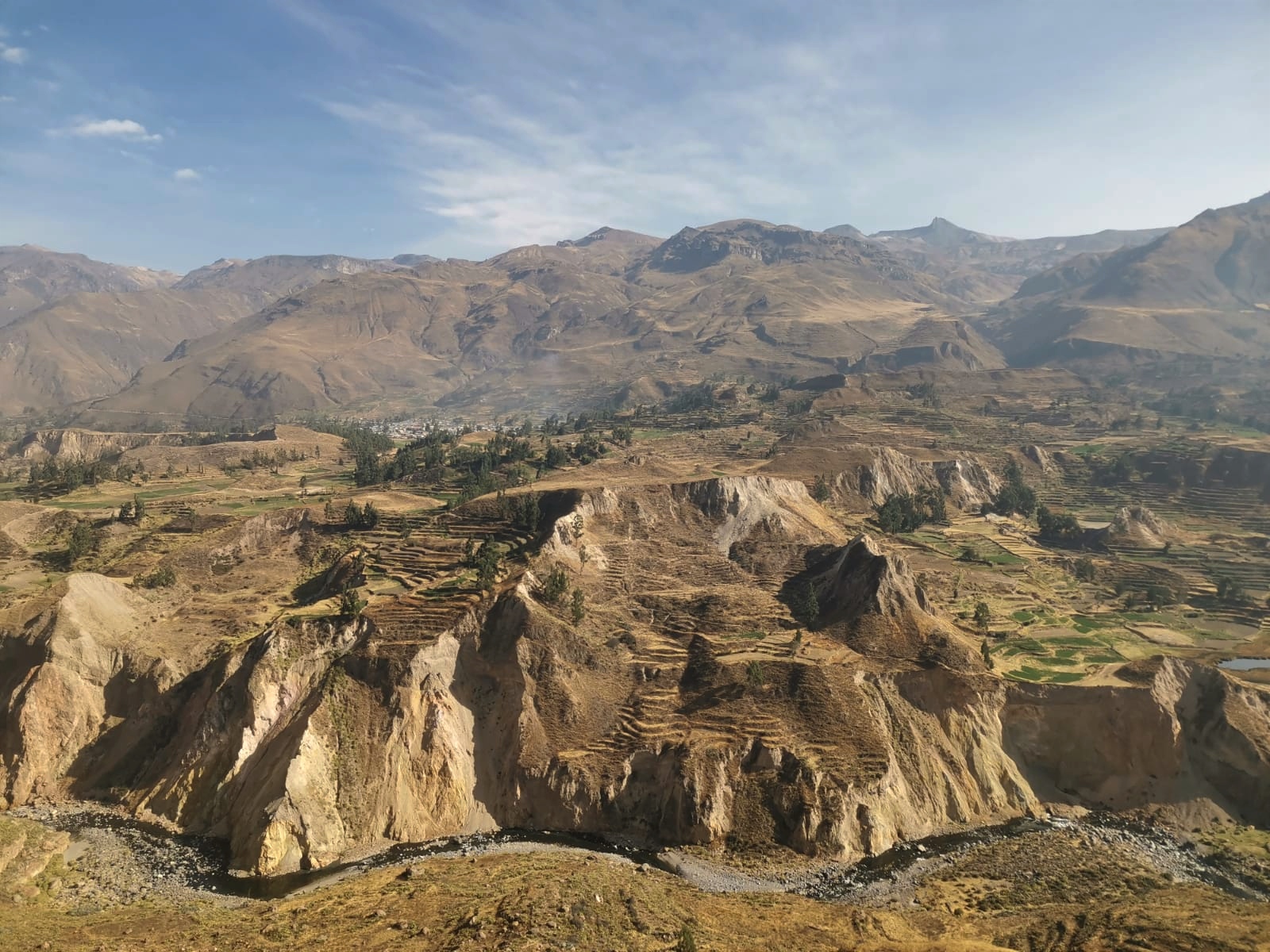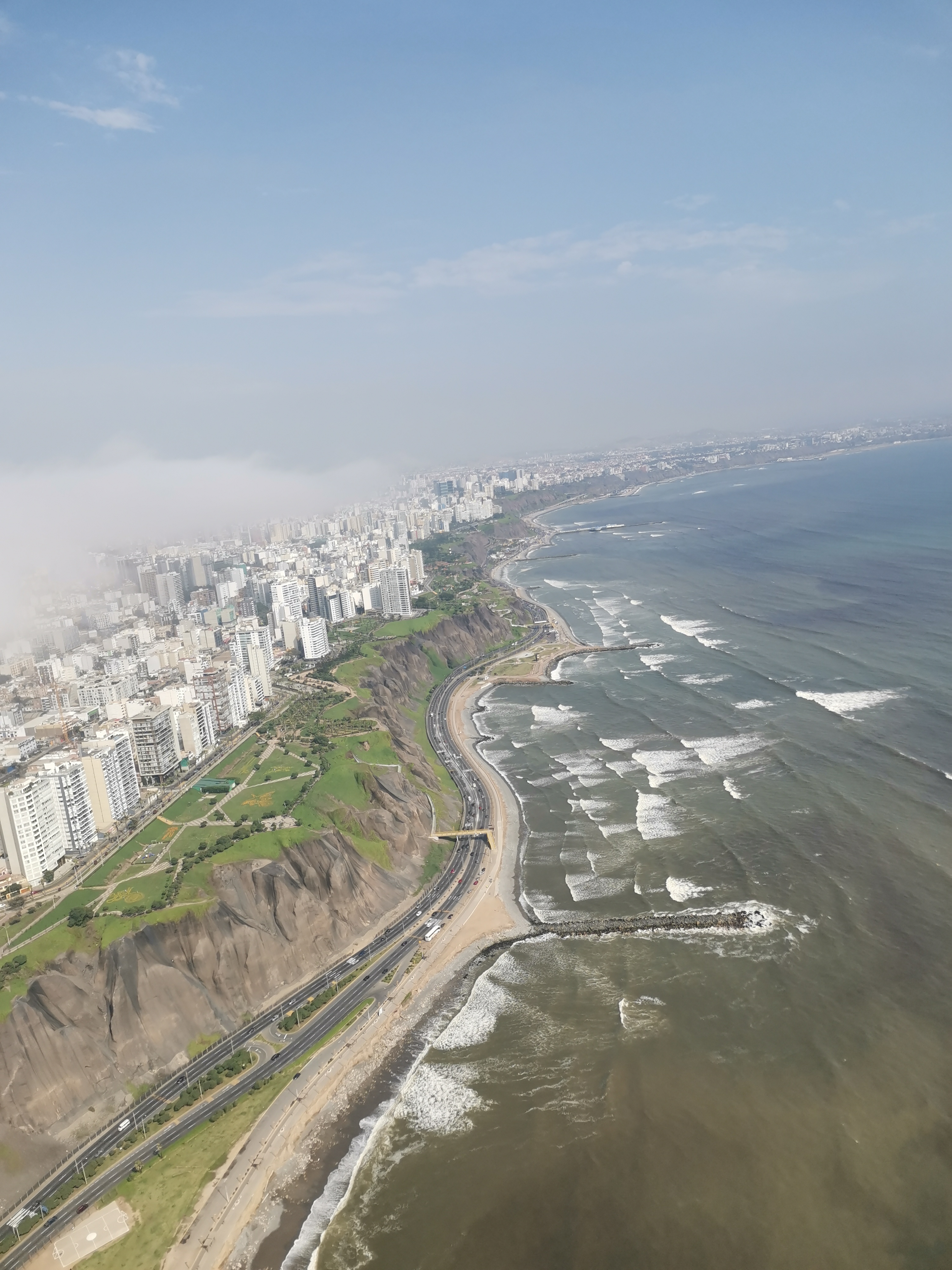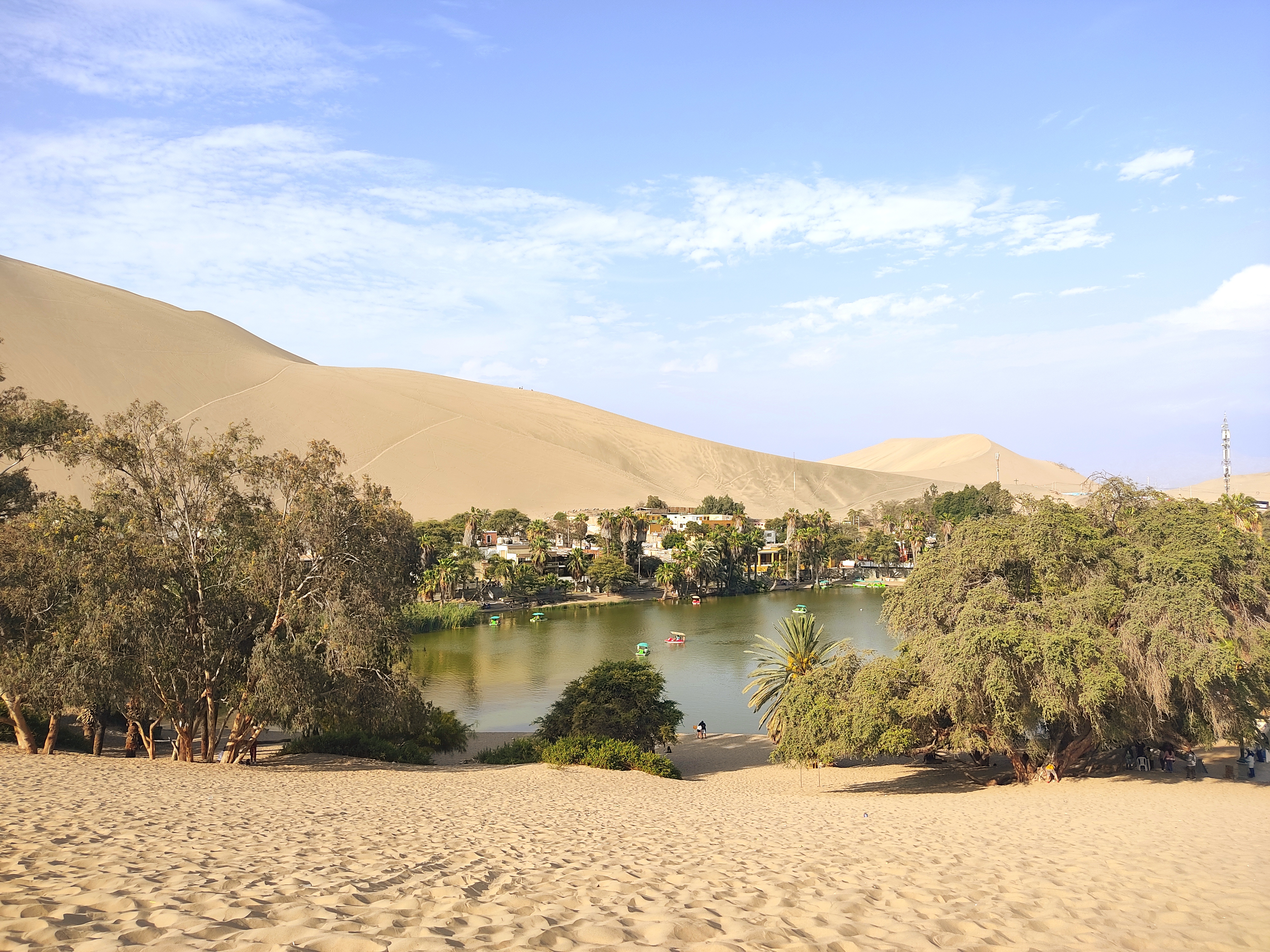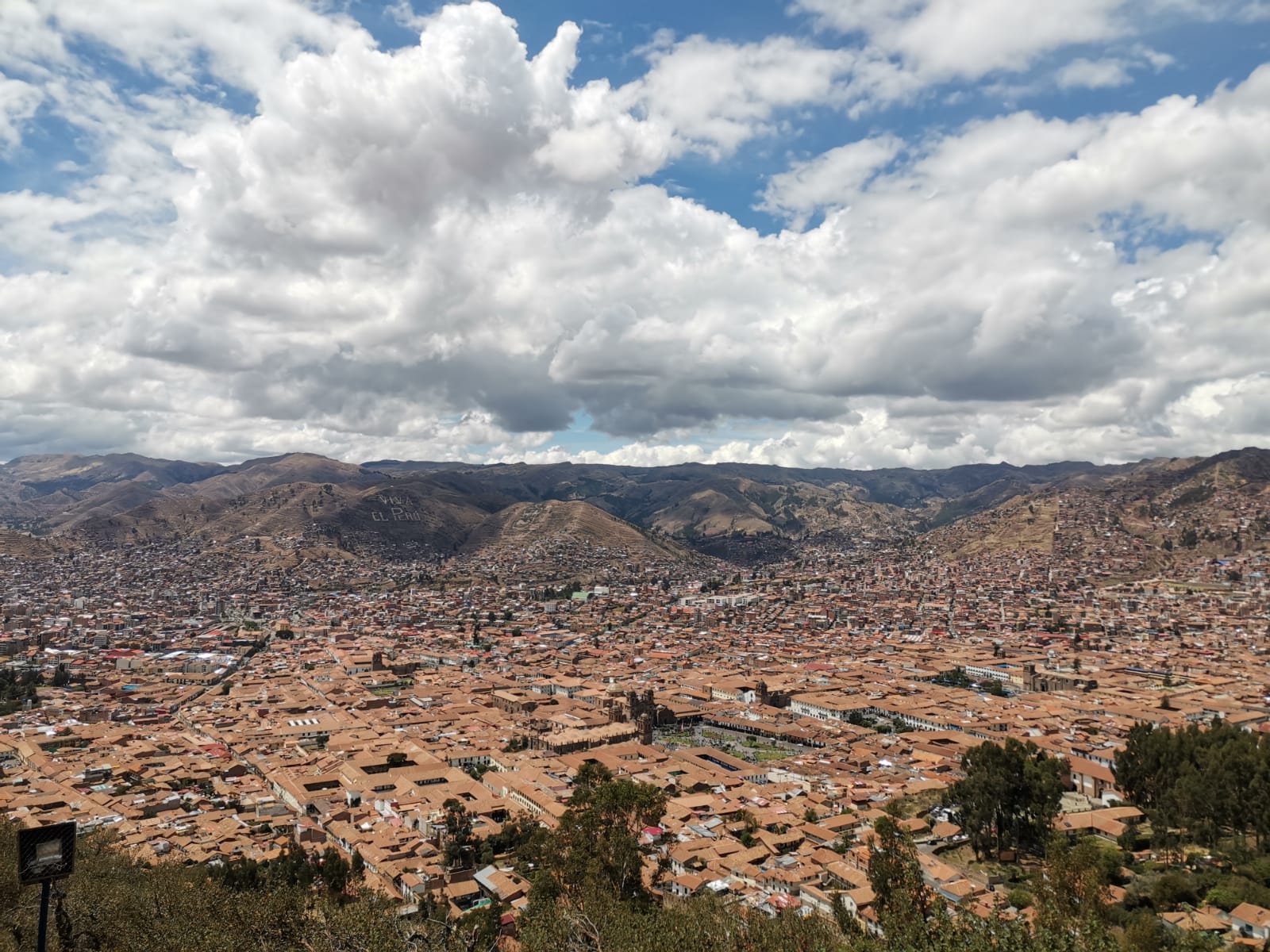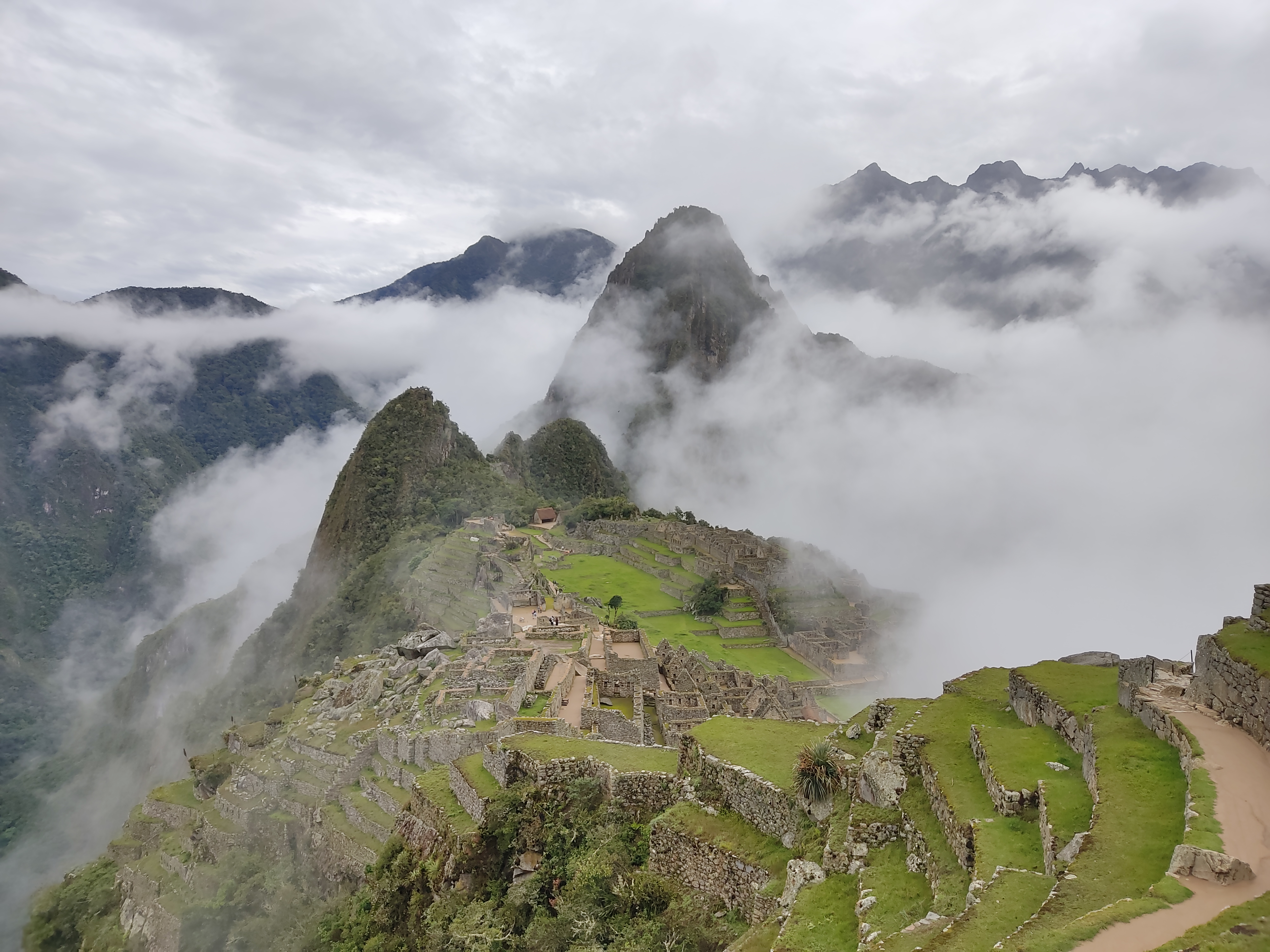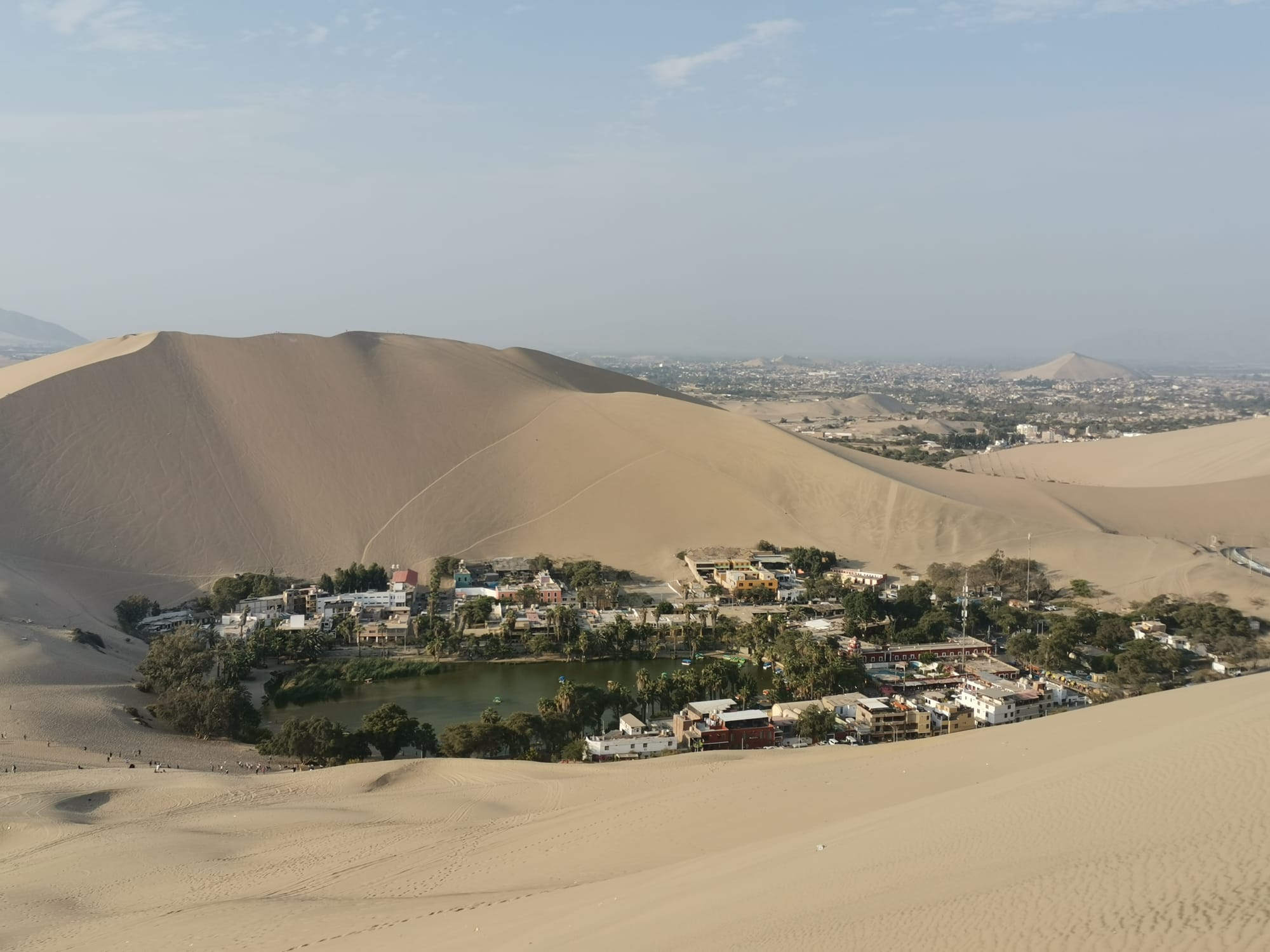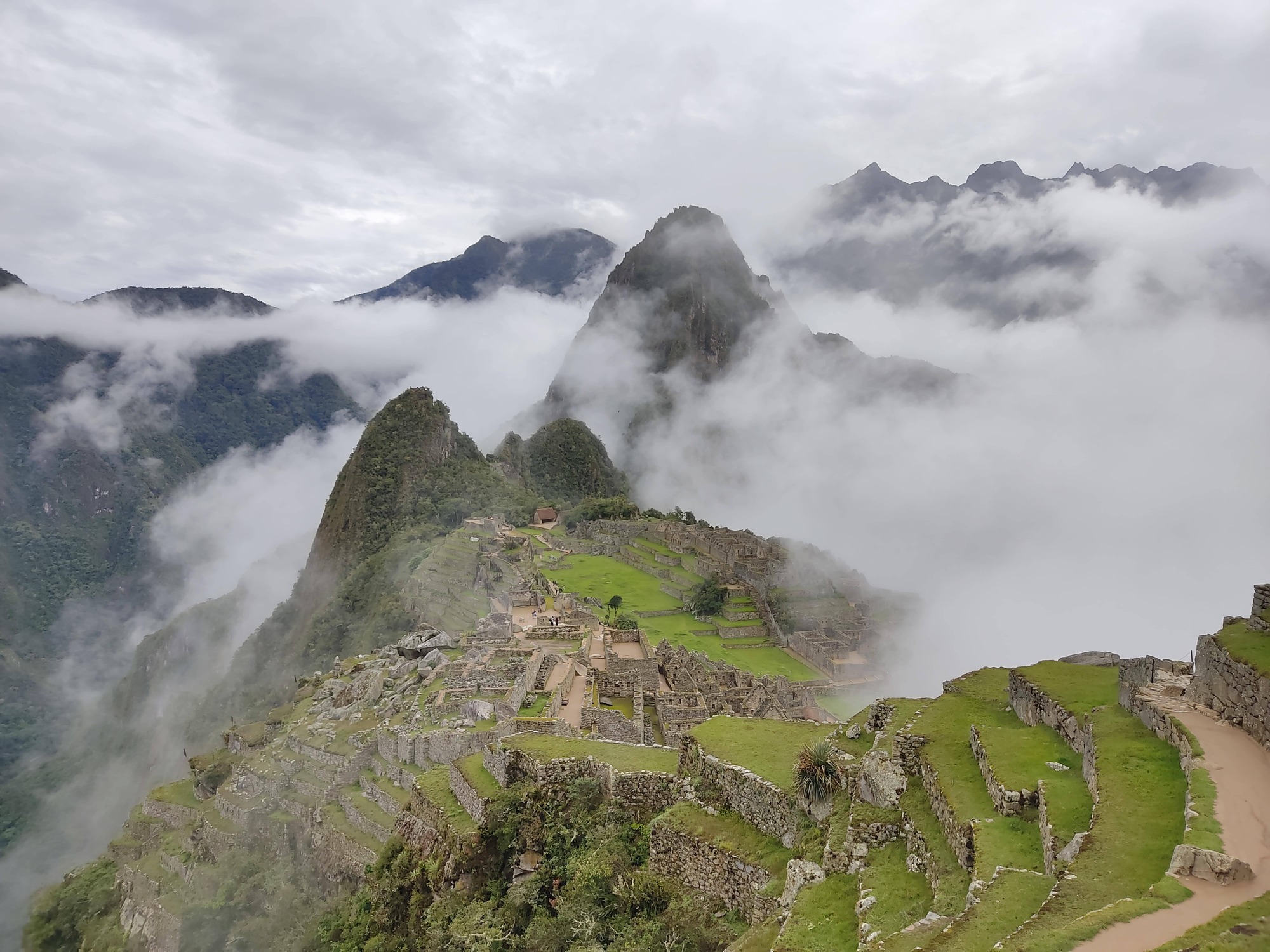Introduction
Although we found Arequipa to be a beautiful city, and enjoyed spending a few days there, its main draw for tourists is its proximity to the Colca canyon - the second deepest canyon in the world. With no large towns close to the canyon, most of the tourists make the 160km journey from Arequipa, through the salinas y aguada blancaSalinas y Aguada Blanca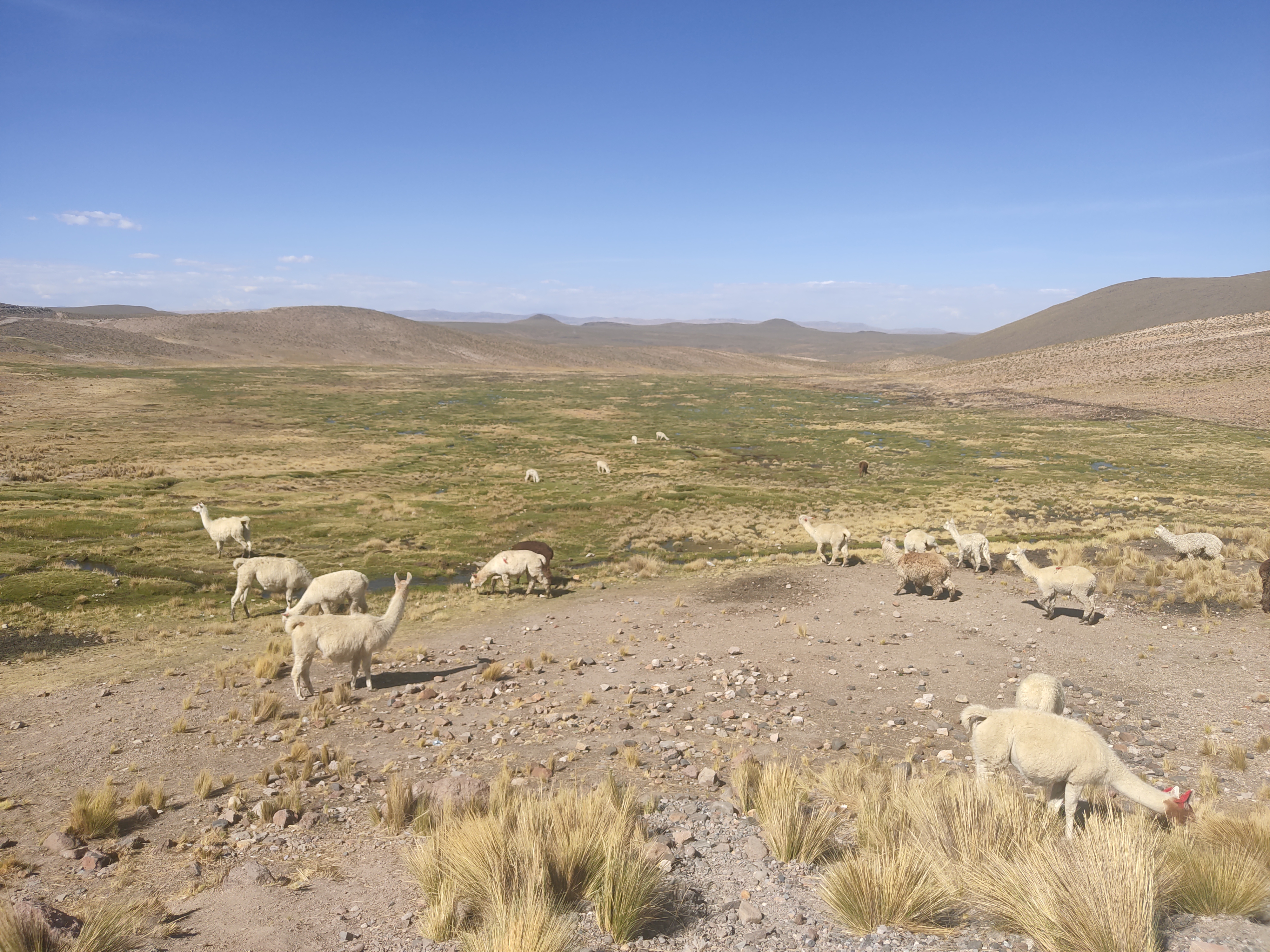 This huge national park, behind Arequipa, is home to many Llamas, Alpacas, and Vicuñas, as well as several volcanoes and lakes. national park. There are a few small communities living in and around the canyon, who make a living by selling and trading crops that grow there, but otherwise it is an extremely barren and rugged place to explore. At its maximum, the canyon is 3km deep, and with altitides of 3,300m, it is a challenging hike, but well worth the effort to see the dramatic landscapes along the way.
This huge national park, behind Arequipa, is home to many Llamas, Alpacas, and Vicuñas, as well as several volcanoes and lakes. national park. There are a few small communities living in and around the canyon, who make a living by selling and trading crops that grow there, but otherwise it is an extremely barren and rugged place to explore. At its maximum, the canyon is 3km deep, and with altitides of 3,300m, it is a challenging hike, but well worth the effort to see the dramatic landscapes along the way.
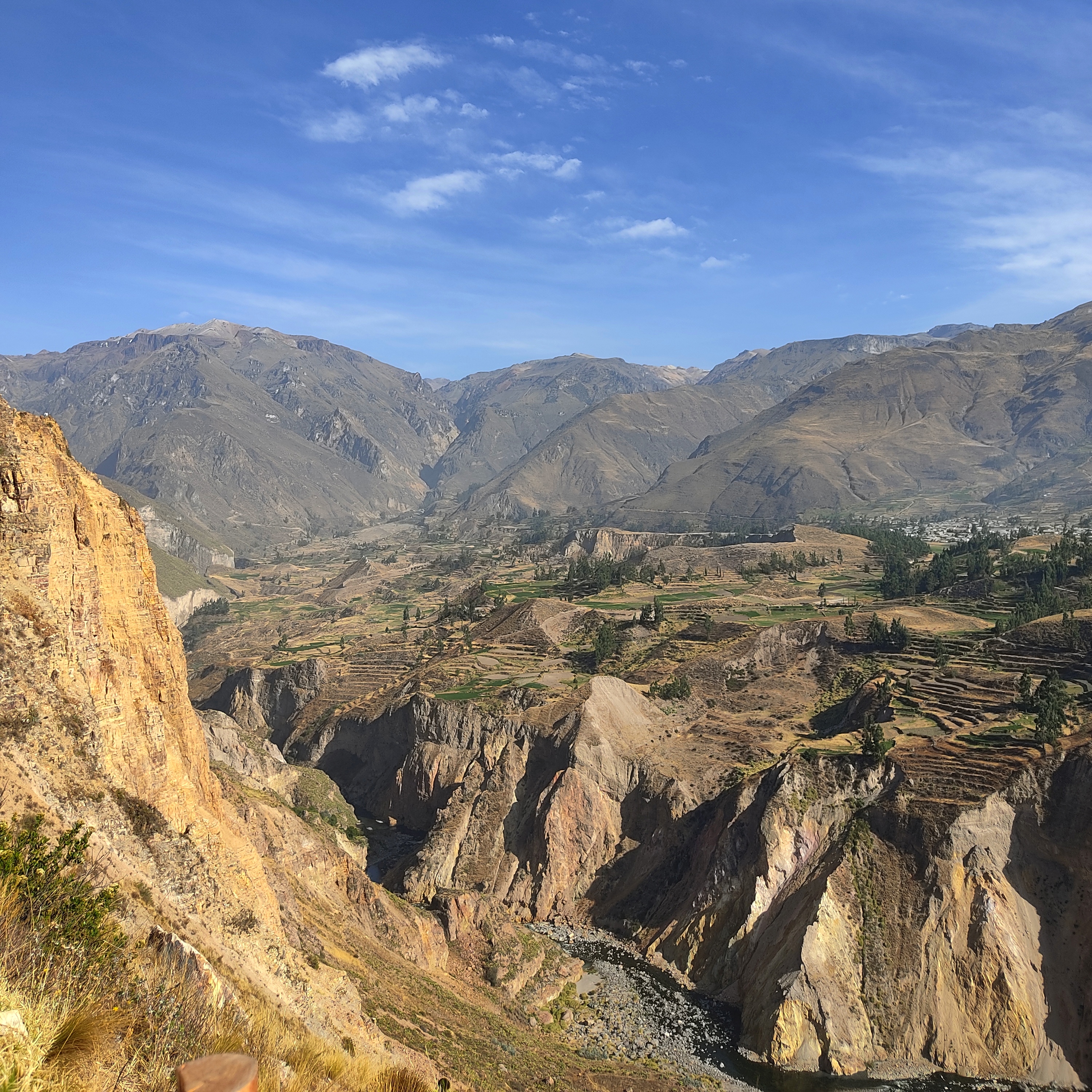
Guided Tours vs Guided Treks.
There are many different ways to visit the Colca Canyon on an organised tour or trek, and it is important to know the differences in what these all offer. Typically, tours will be just 1 day (although rare, 2-day tours are also available), and involve being driven around the main sights, with little to no actual walking required. Although you get to see the highlights of the national park and the surrounding areas, such as the hot springs, the volcano mirador, and the Condor's CrossCondor's Cross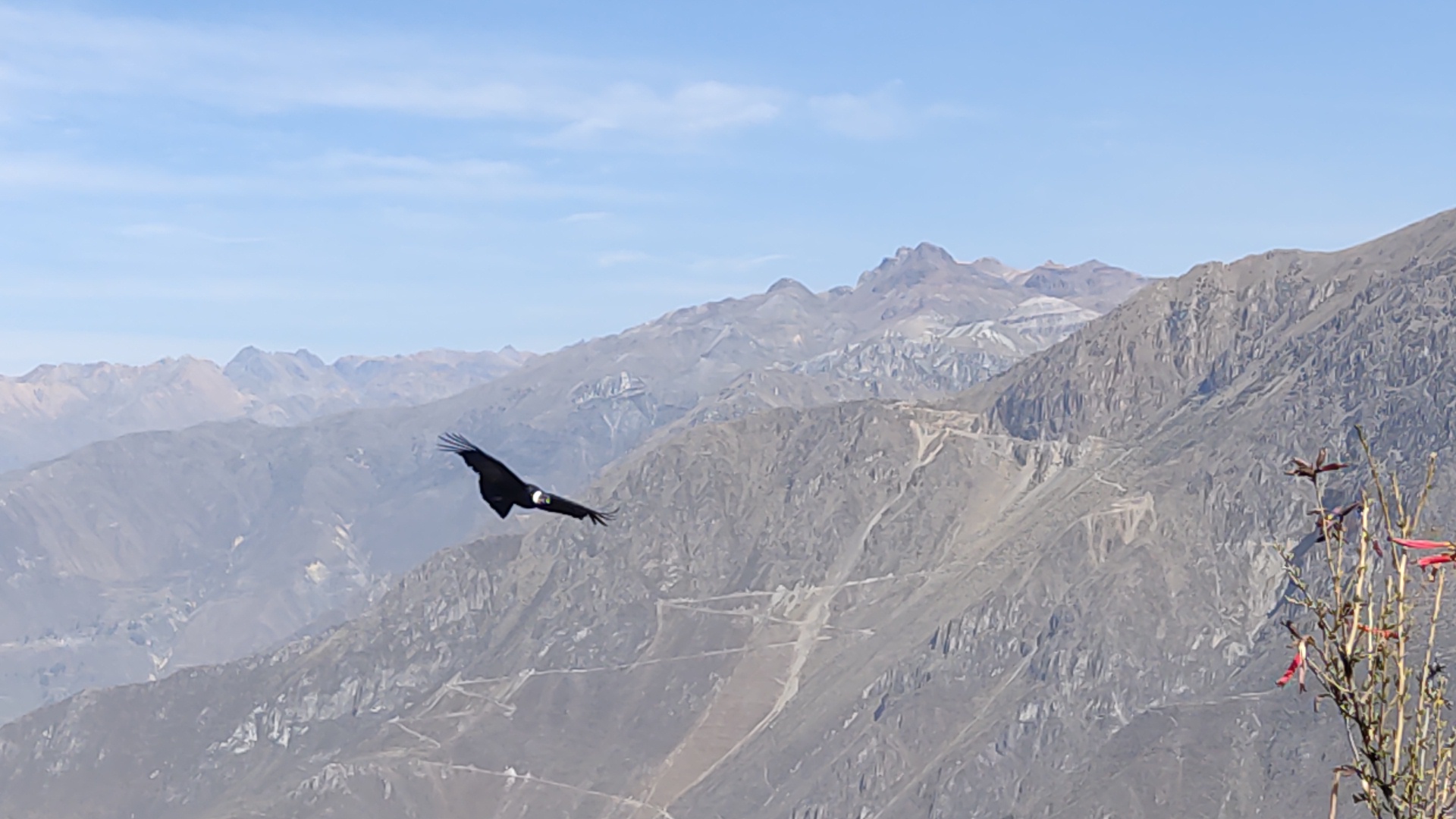 The Condor's cross is a viewpoint towards the start of the canyon, and is supposedly the best place in the World to see the American condor up close. We got lucky and had 3 of the giant birds soaring overhead at once, although a fair amount of patience and luck is usually required., these tours don't actually go down to the canyon itself. All the organised treks, which involve hiking to the bottom of the canyon and back up again, also visit the same stops as the day tour. Therefore, after experiencing the same highlights as the day-tour, we do not think these tours are worth the ~8hrs spent sitting in the minivan, especially as they miss out on visiting the very bottom of the canyon, which was a real highlight for us.
The Condor's cross is a viewpoint towards the start of the canyon, and is supposedly the best place in the World to see the American condor up close. We got lucky and had 3 of the giant birds soaring overhead at once, although a fair amount of patience and luck is usually required., these tours don't actually go down to the canyon itself. All the organised treks, which involve hiking to the bottom of the canyon and back up again, also visit the same stops as the day tour. Therefore, after experiencing the same highlights as the day-tour, we do not think these tours are worth the ~8hrs spent sitting in the minivan, especially as they miss out on visiting the very bottom of the canyon, which was a real highlight for us.
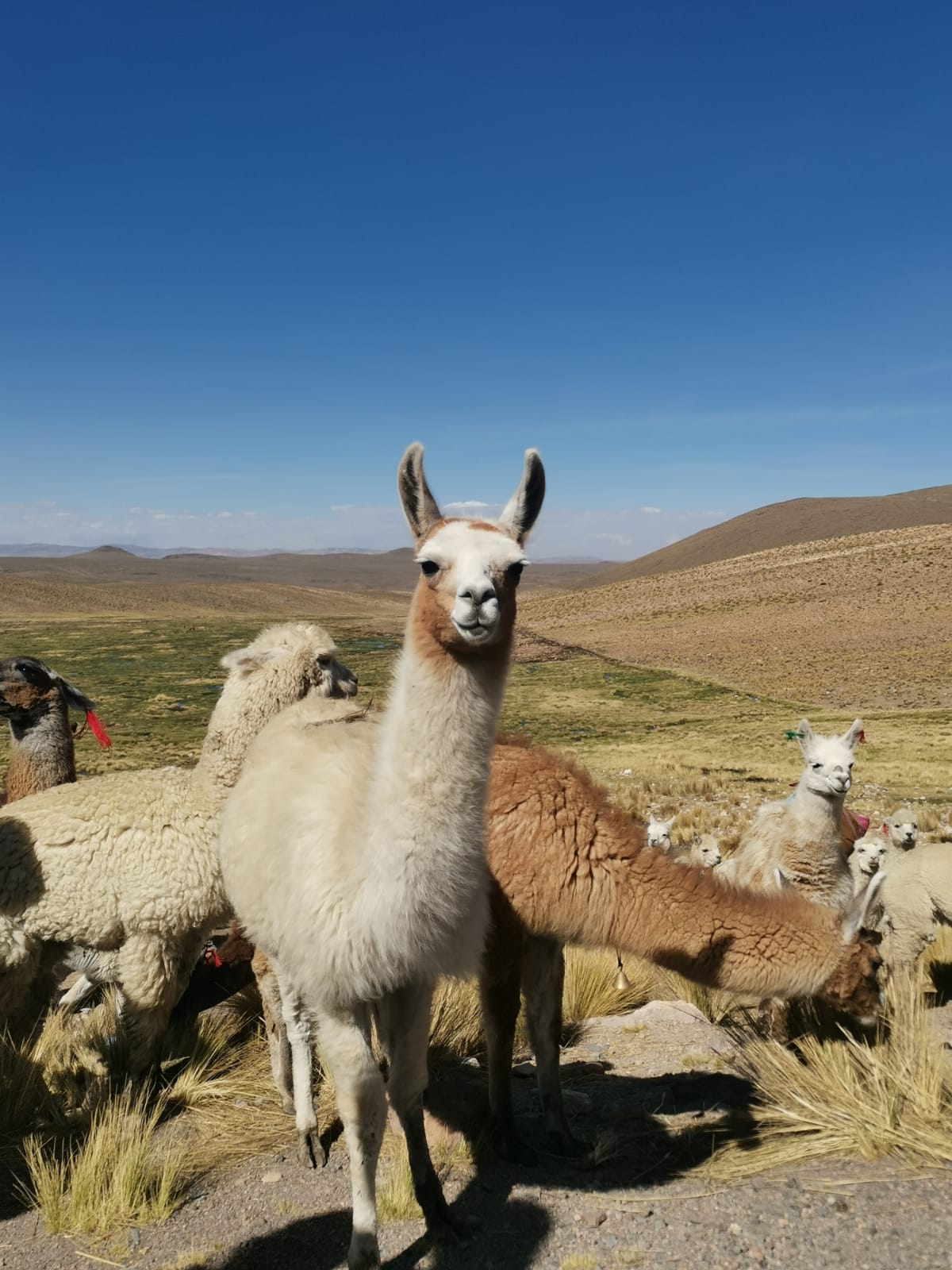
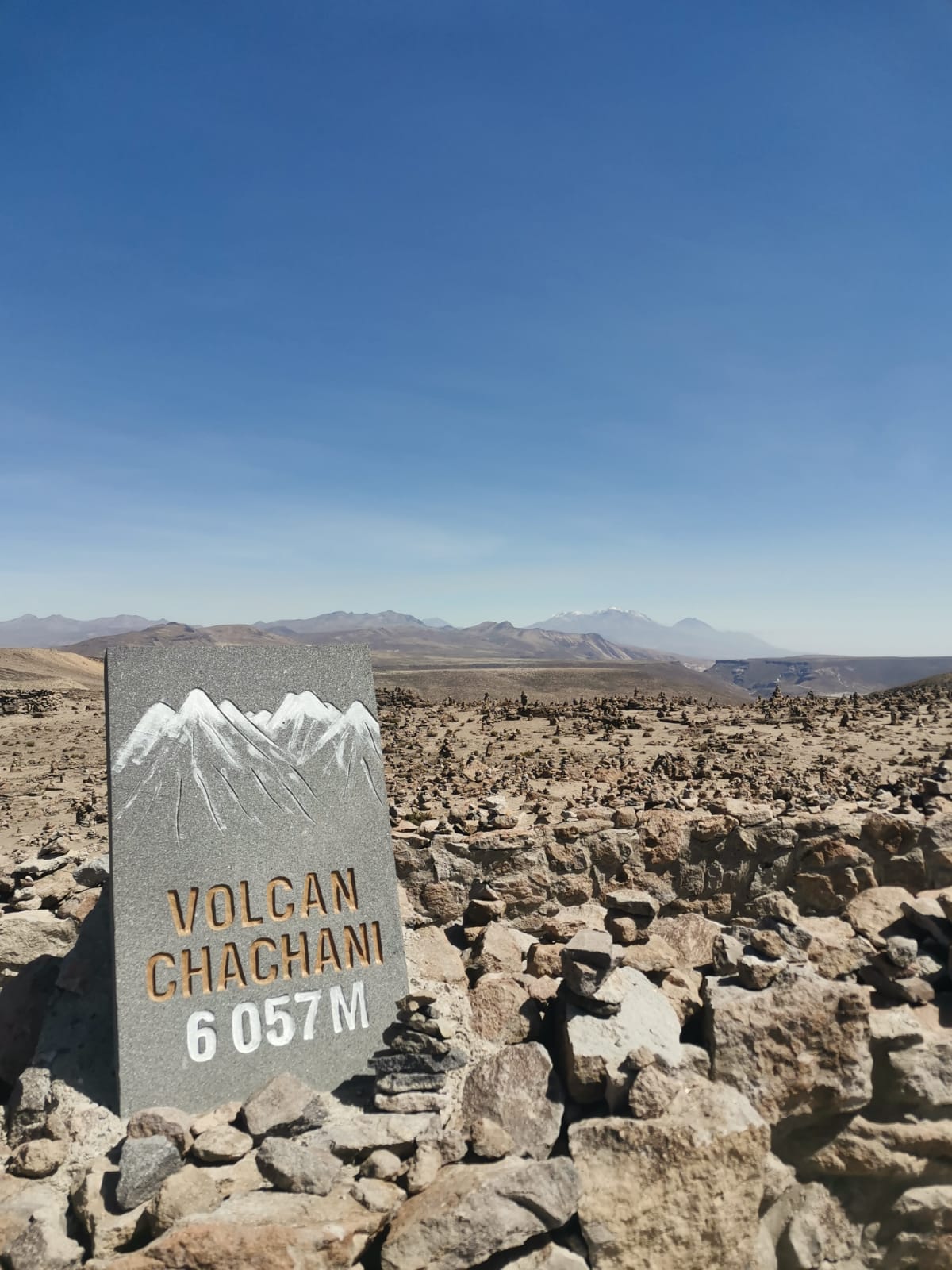
Aside from the organised tours, the Colca Canyon can also be visited on guided treks. These involve transportation to the canyon, followed by either 2- or 3-days trekking through the landscape before the drive back. When visiting for 2 or more days, the long drive to the canyon (and back) is more worth it. As the sun rose, we passed steep drops, rocky tunnels, and vast farming terraces, before arriving at the canyon for breakfast. Fortunately, the drive back follows the same route, so you get a chance to see all the places you slept through on the way there! The guided treks stop off at all the same highlights from the day-tour, just with a lot of walking sandwiched in between, so you don't miss out on anything by opting for a trek rather than a tour.
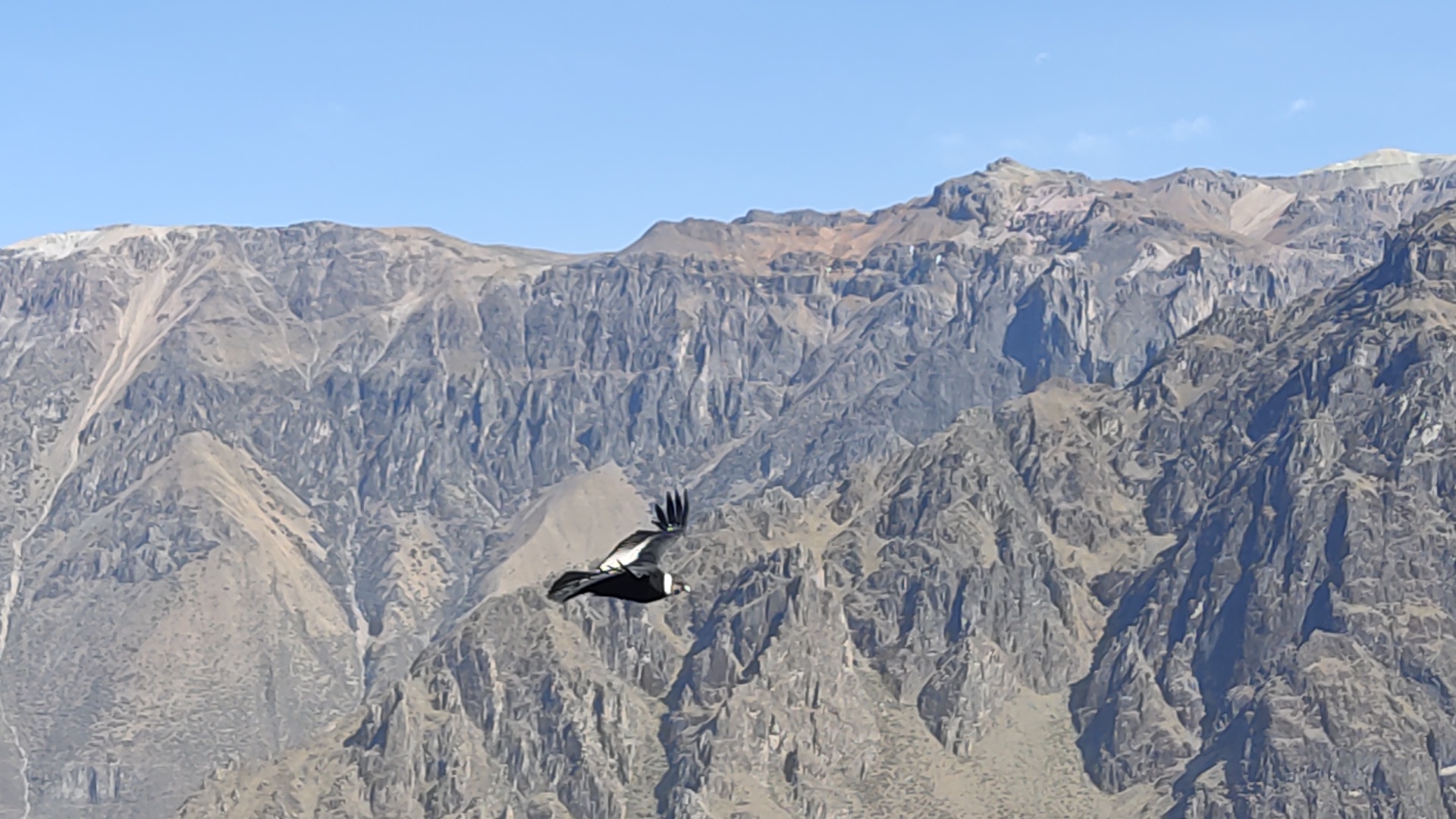
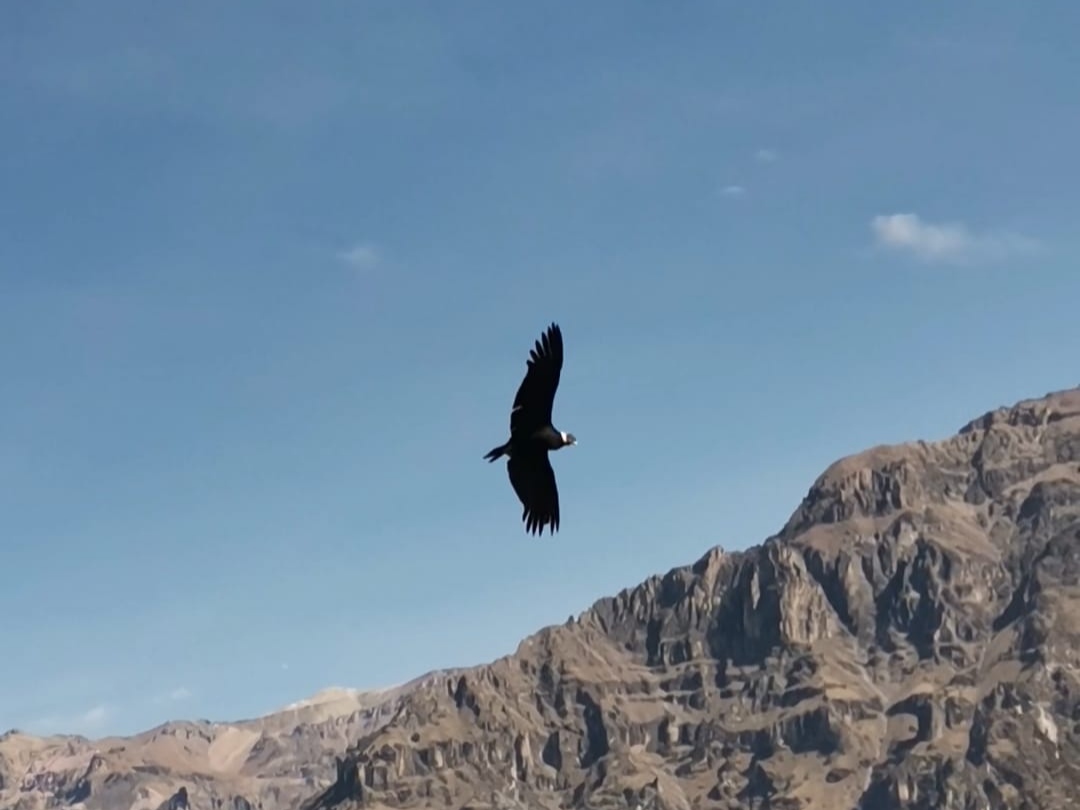
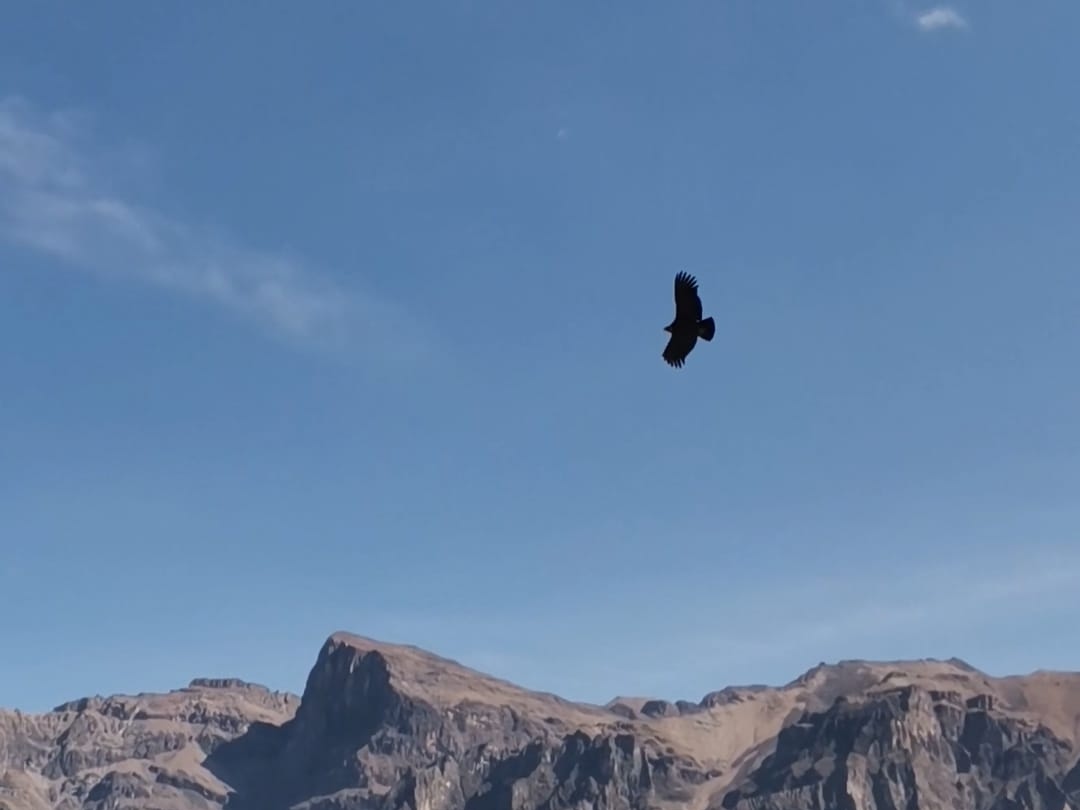
Can you hike the Colca Canyon Independently?
It is worth mentioning that you don't actually need to join any kind of organised trip to the Colca canyon, and it is perfectly possible to visit by yourself. To do this, you need to arrange to take either a bus or colectivo to the town of Chivay, which is at the edge of the canyon. Then, a bus can take you to the smaller towns at the start of the trail. In these towns, and along the trail, there are hostels and guesthouses, and you generally don't need to book these in advance. These are the same hostels that the organised treks use, and they also provide cooked meals for a small fee.
We opted to join a guided trek, because at the time we didn't know how easy it was to go by oursleves, with little information online. The organised treks are reasonably priced, with all accommodation, meals, and transport included, so the cost isn't necessarily a deciding factor. When going independently, the public buses/colectivos from Chivay to Arequipa will not stop off at places like Condor's Cross or the national park along the route, so this is worth taking into consideration. The hike involves a steep descent, followed by walking along the bottom of the canyon before climbing back to the top again. Although there are a few different trails, it is hard to actually get lost (in a canyon, there is only really one direction you can go in), and even on the guided trek we were largely left to oursleves, meeting up with our guide at a few checkpoints on the way.
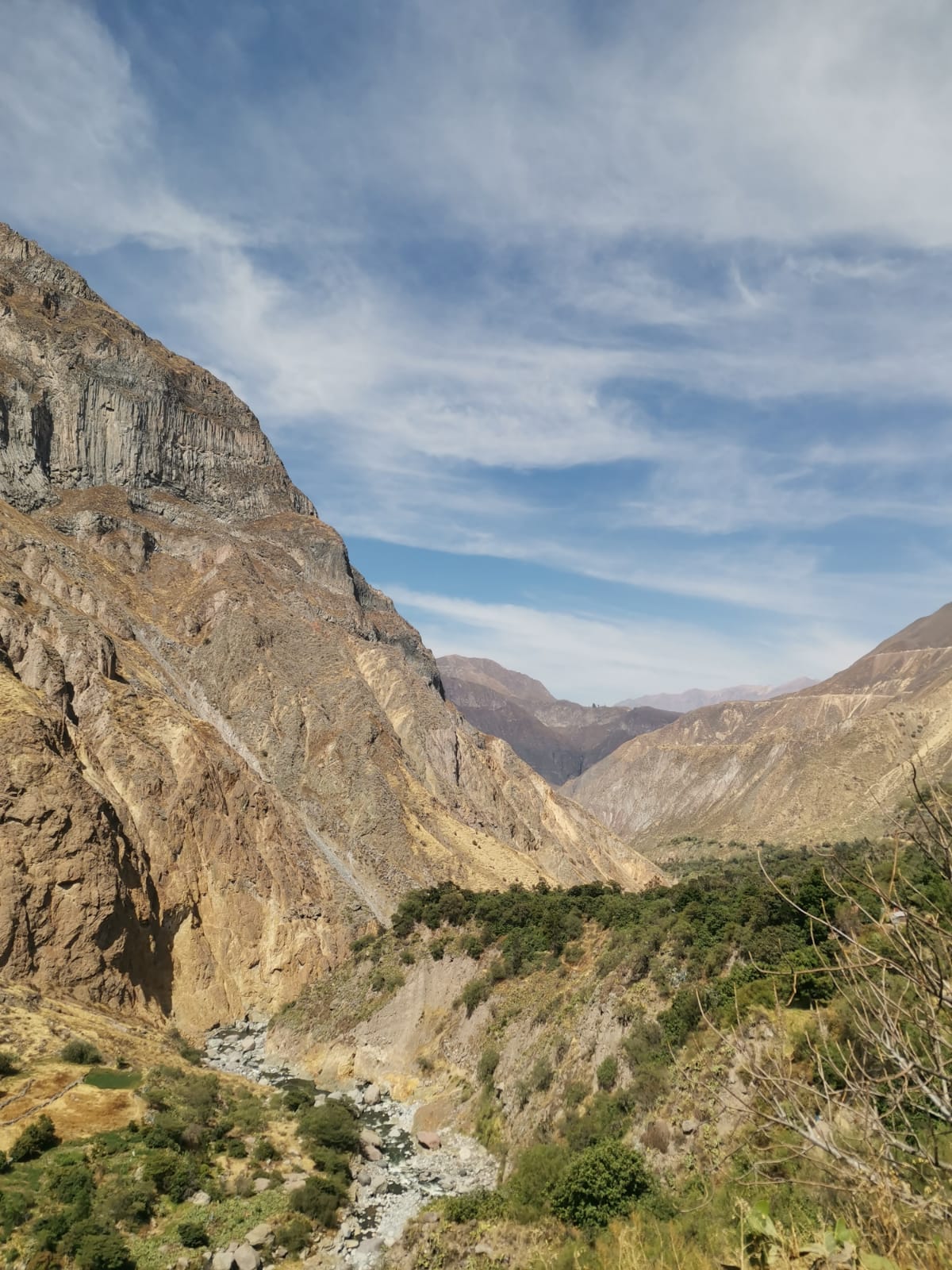

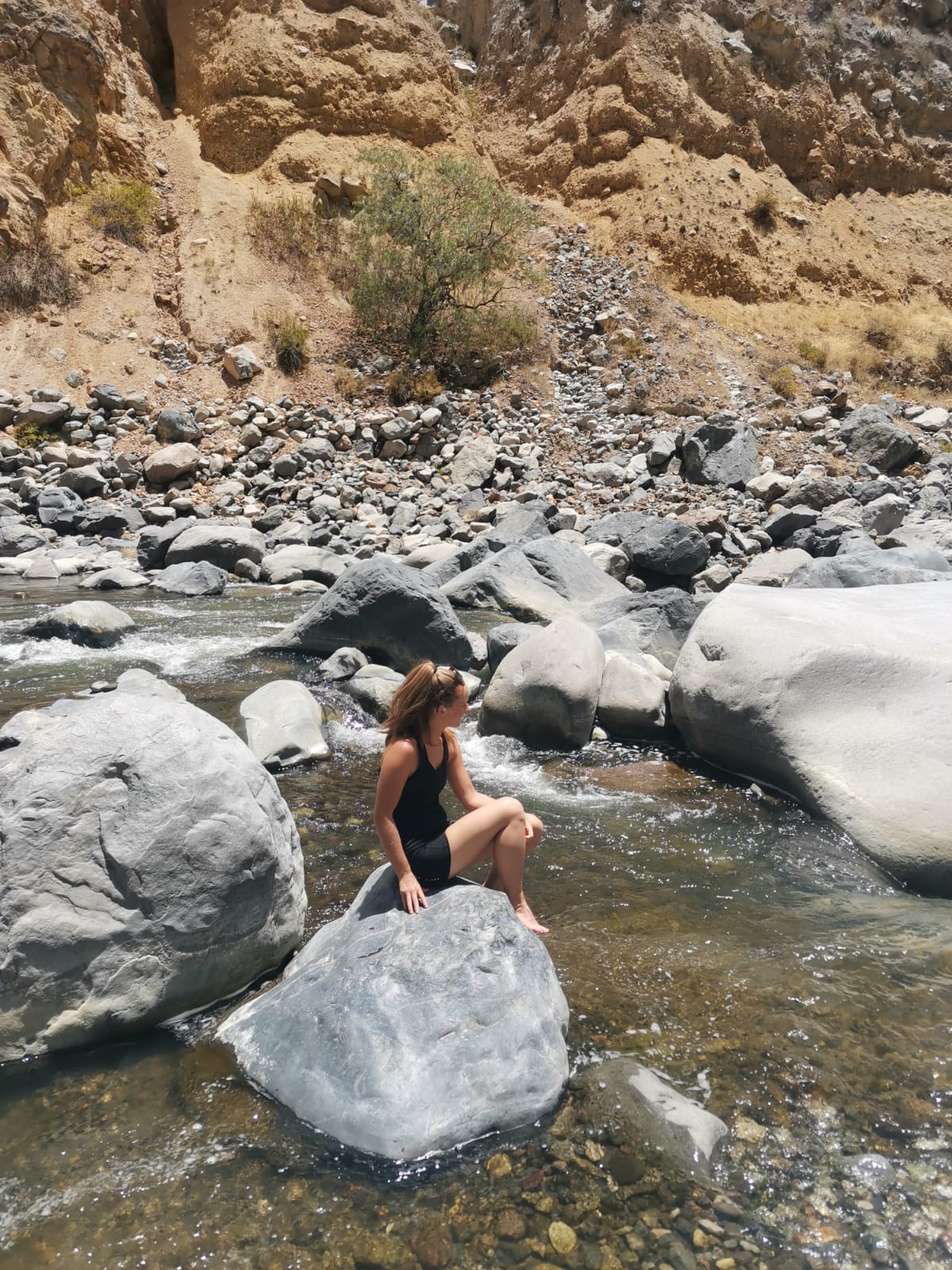
Overall, unless you want an extra adventure and challenge, or are solely interested in the hike itself, then it usually makes more sense to take an organised trek. These will visit more spots en route to the canyon, and have everything organised beforehand so you can just focus on enjoying the canyon. However, all the guided treks start at roughly the same time, so be prepared for the trail to be quite busy. Although you will probably want to start early if you hike by yourself, you will have more flexibility to avoid the busy times if you wish.
How many Days should you spend in the Colca Canyon?
Regardless of which agency you book with, everyone gets pooled togetherDifferent agencies selling the exact same tour for different prices was a recurring theme in many south American countries. More often than not, you don't get what you pay for, and it makes sense to find the cheapest offer available (as long as it isn't too good to be true). and recieves the same experience. The only thing that matters is the type of trip (tour vs trek) and the number of days. Both the treks follow the exact same route, so with the 3 day hike you have much more time to cover the 22km, and only walk in the mornings. But don't be fooled into thinking the 3-day trek is only for less-fit people with less experience hiking. In reality, the slower pace of the 3-day trek allows more time to explore and enjoy the awesome landscapes in the canyon.Both treks are identical for the first morning, following a lose, rocky trail that steeply descends to the bottom of the canyon. Reaching the wobbly rope bridge at the bottom was a relief, after cautiously walking downhill all morning, and looking back up at the near-vertical canyon wall we had just descended made the route seem impossible. Since all the groups start at the same place, this section was rather crowded, but the groups split off and go to various small villages
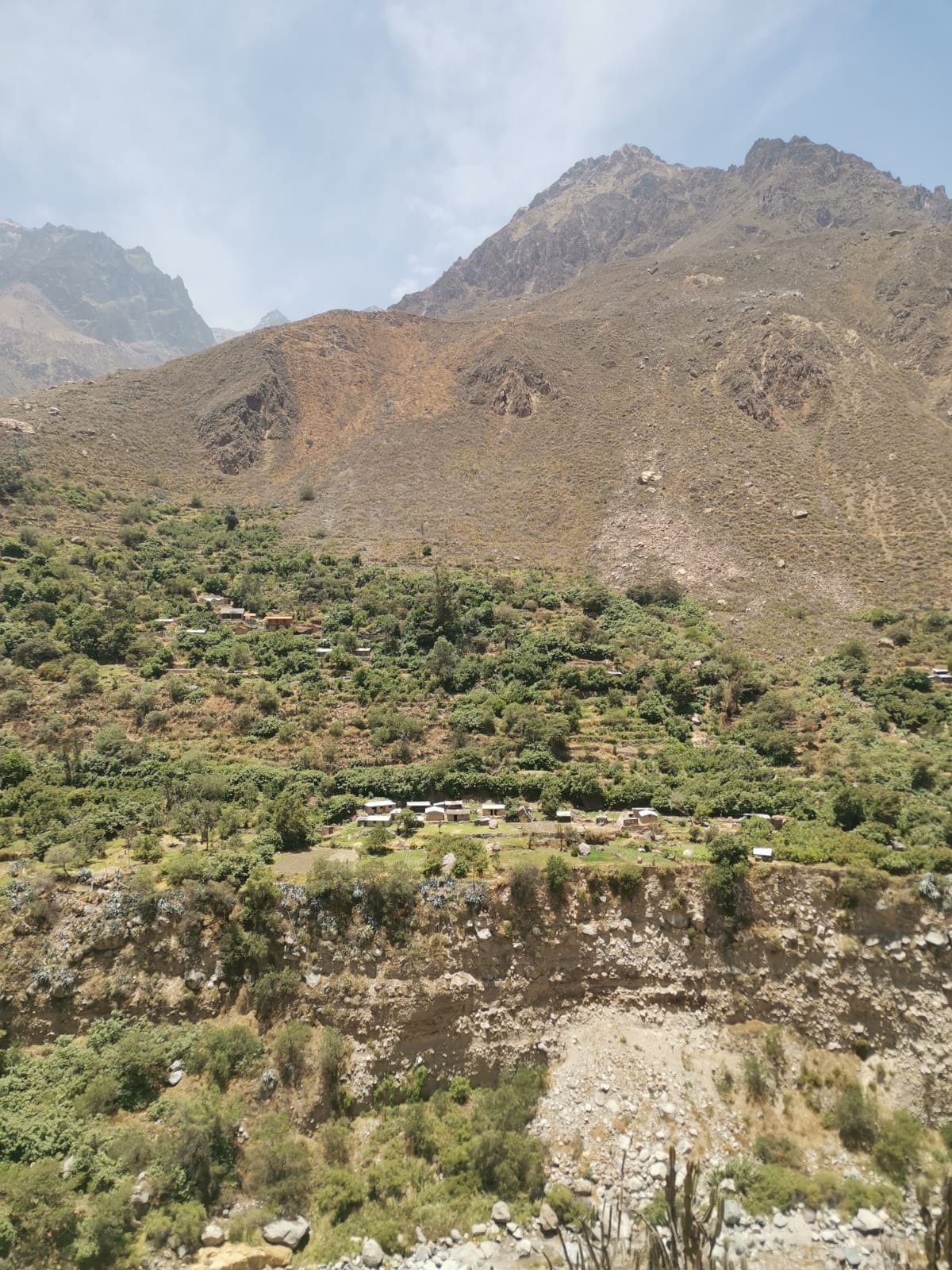 Villages is an overstatement - the settlements in the canyon are little more than a few houses, where one family lives, as well as several avocado trees and some livestock. The locals live a peaceful and simple life, trading their produce with other villagers at the weekly markets to get what they need to survive. for lunch. After a delicious, home-made three-course meal, we waved goodbye to the 2-day trekkers in our group, who set off for another 4 hours of hiking. By dinner time, they would have arrived at the 'Oasis' for a meal, before the dreaded 5am start the following morning to climb back out of the canyon.
Villages is an overstatement - the settlements in the canyon are little more than a few houses, where one family lives, as well as several avocado trees and some livestock. The locals live a peaceful and simple life, trading their produce with other villagers at the weekly markets to get what they need to survive. for lunch. After a delicious, home-made three-course meal, we waved goodbye to the 2-day trekkers in our group, who set off for another 4 hours of hiking. By dinner time, they would have arrived at the 'Oasis' for a meal, before the dreaded 5am start the following morning to climb back out of the canyon.
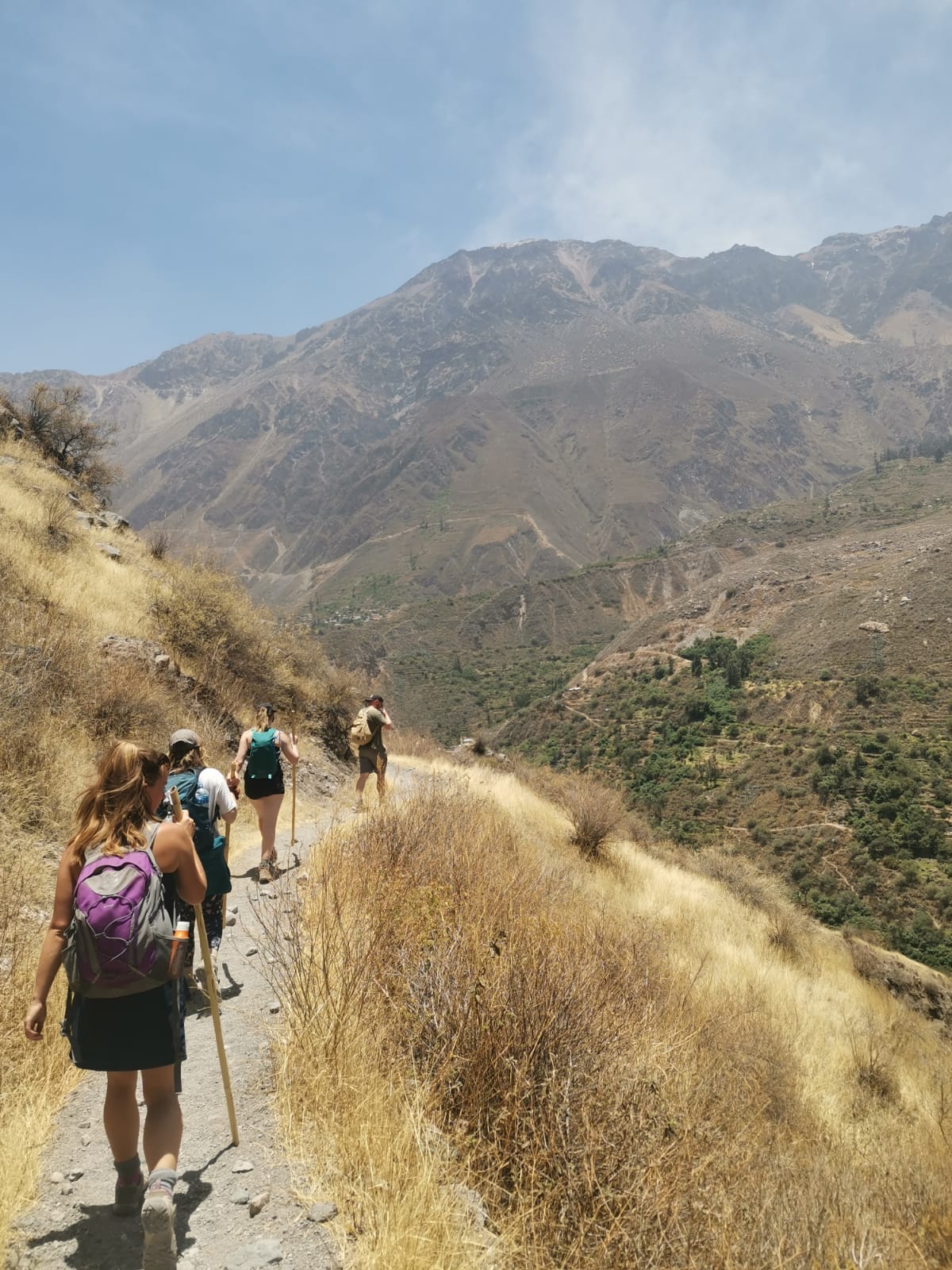
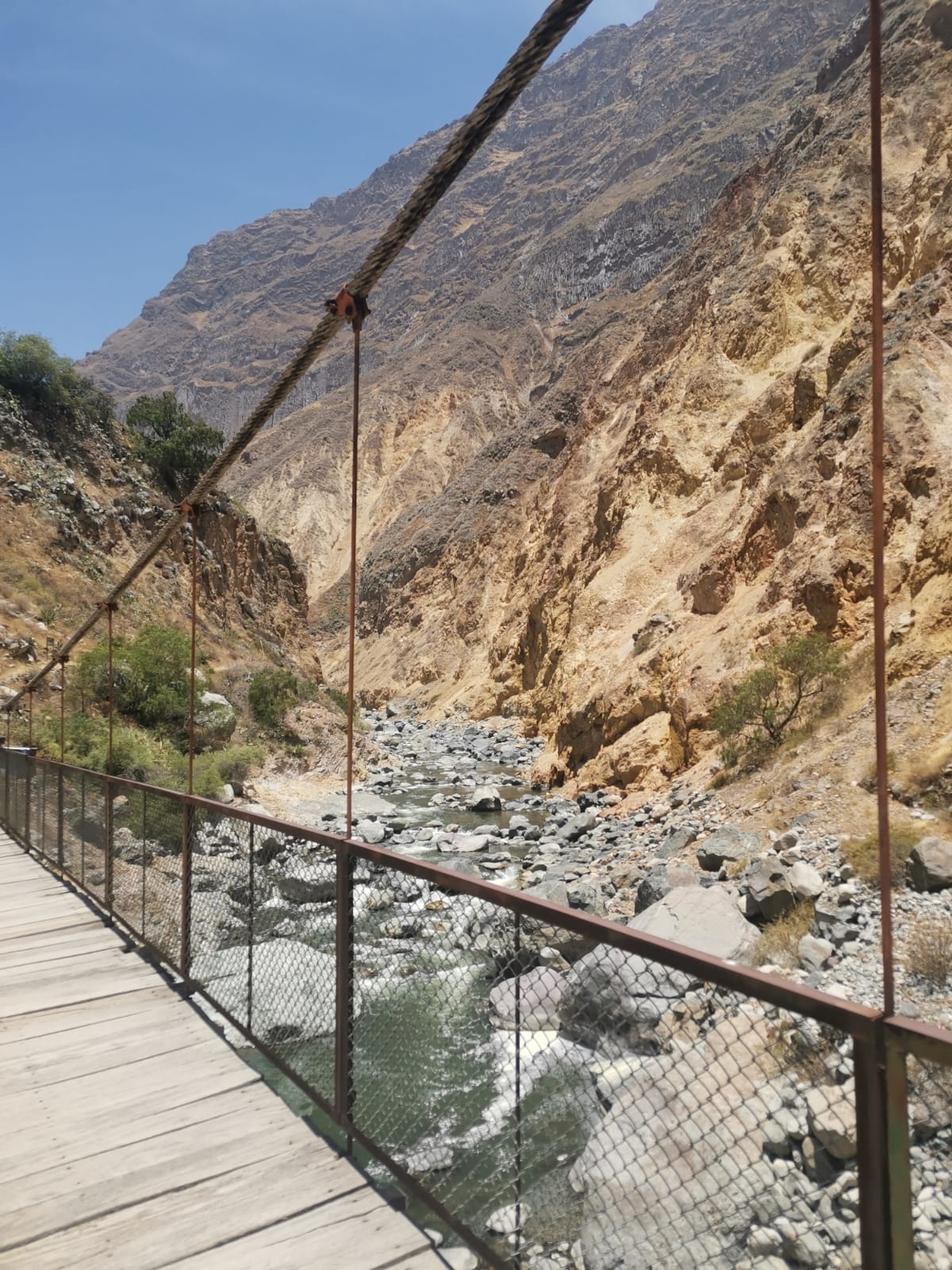
On the day of our trek, despite at least 100 people taking part in the 2-day hike, we were surprised to find out we were the only ones doing the 3-day hike, so it felt like we had the whole remote canyon to ourselves. After exploring the peaceful villages at the base of the vast canyon, we had dinner by candlelightUnsuprisingly, this remote canyon gets very dark when the sun sets, and the only electricity our hosts had was in the kitchen. with the same family who cooked us lunch, before settling down in one of their cosy cabins.
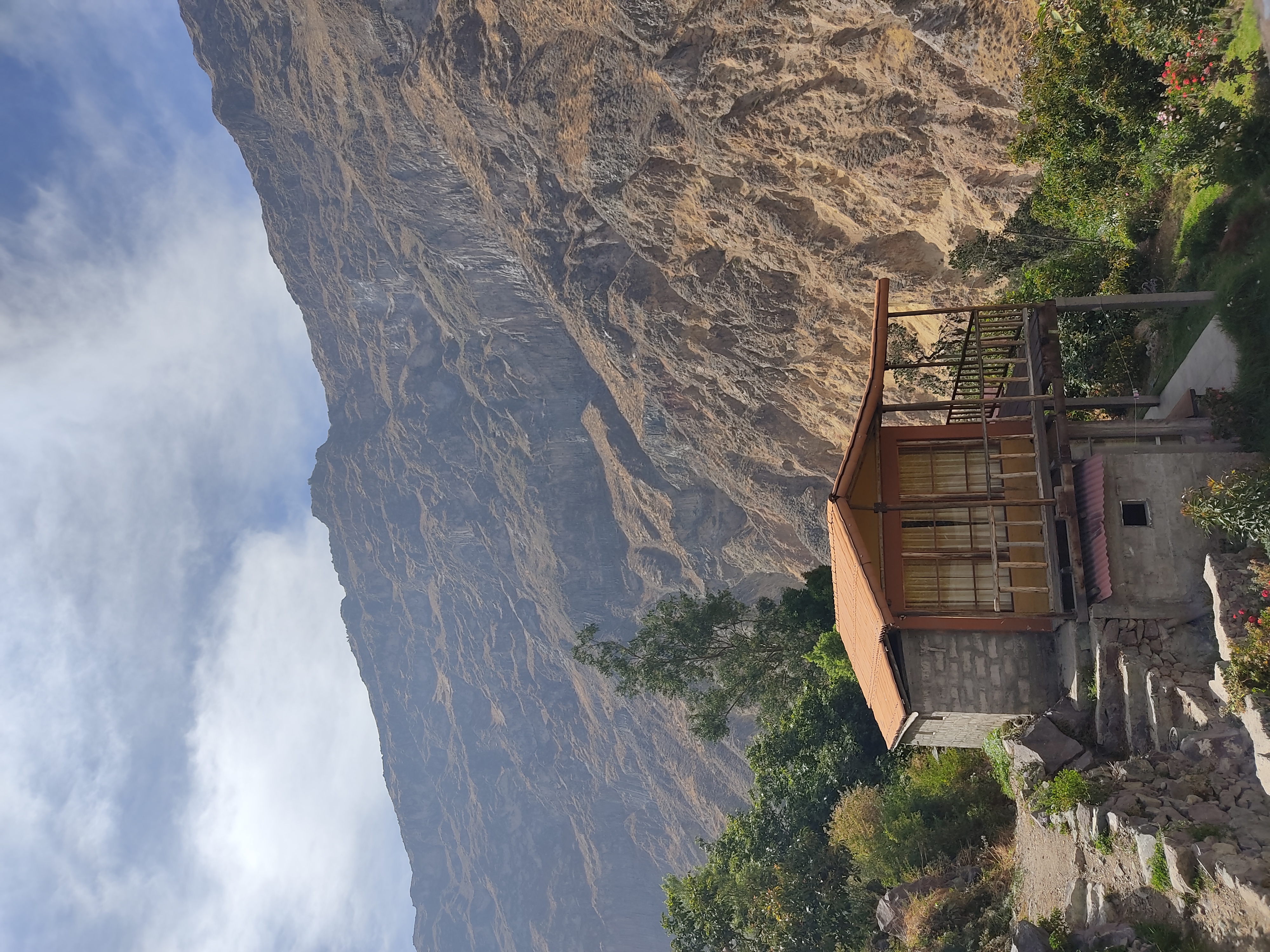
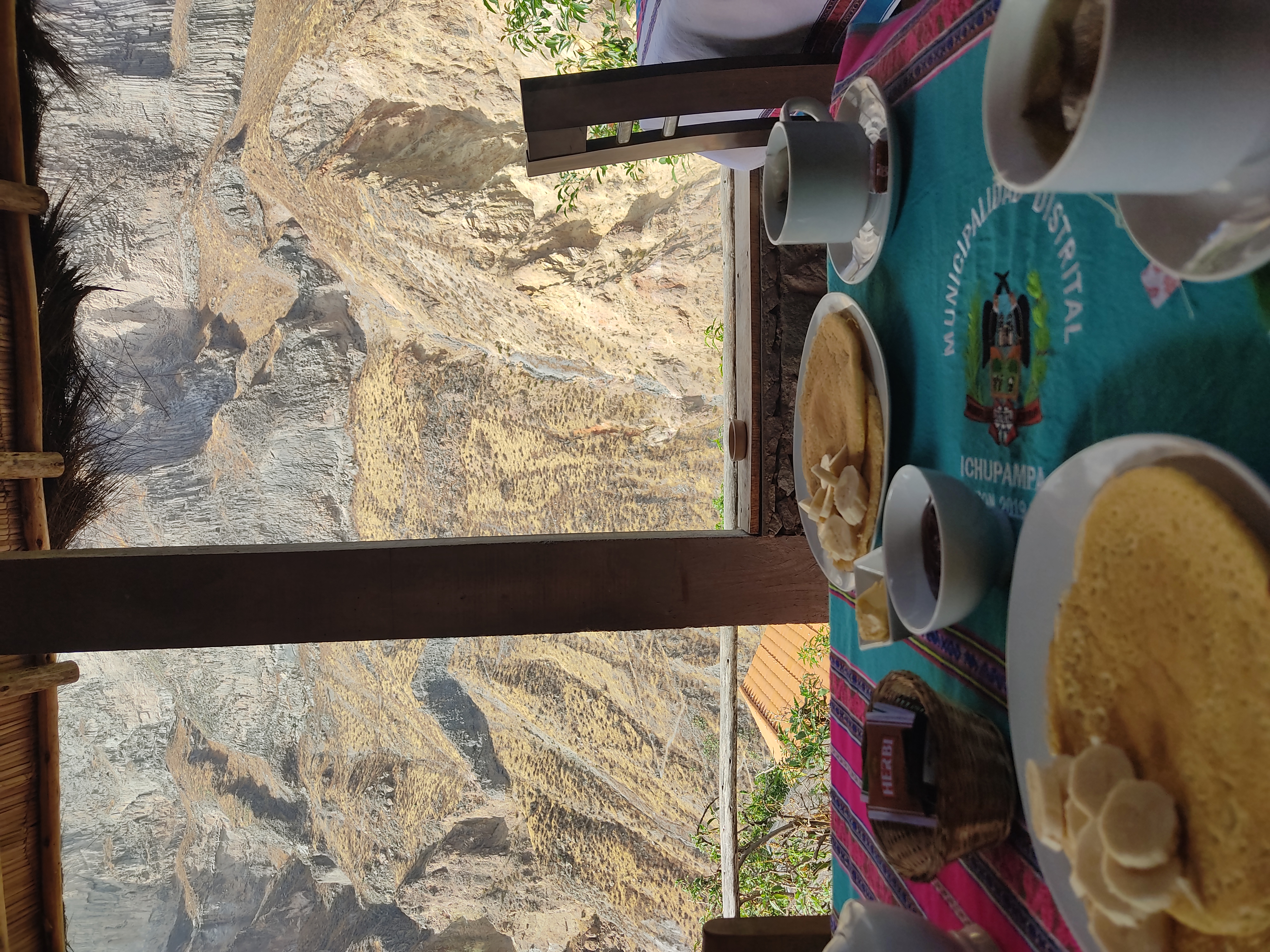
The next morning, after enjoying a lovely breakfast overlooking the steep canyon walls, we leisurely made our way 7km through the neighbouring villages, to the 'oasis'. We arrived at the pool in time to enjoy a swim in the midday heat, and were glad we hadn't opted for a 2-day tour and only arrived for the previous evening. After another delicious cooked lunch, we had the afternoon free to explore the farm where we were staying. As the hostel got busier and the sun set, we gatheted around the campfire with all the other groups that had arrived. After dinner, we got an early night before the dreaded ascent on the final day.
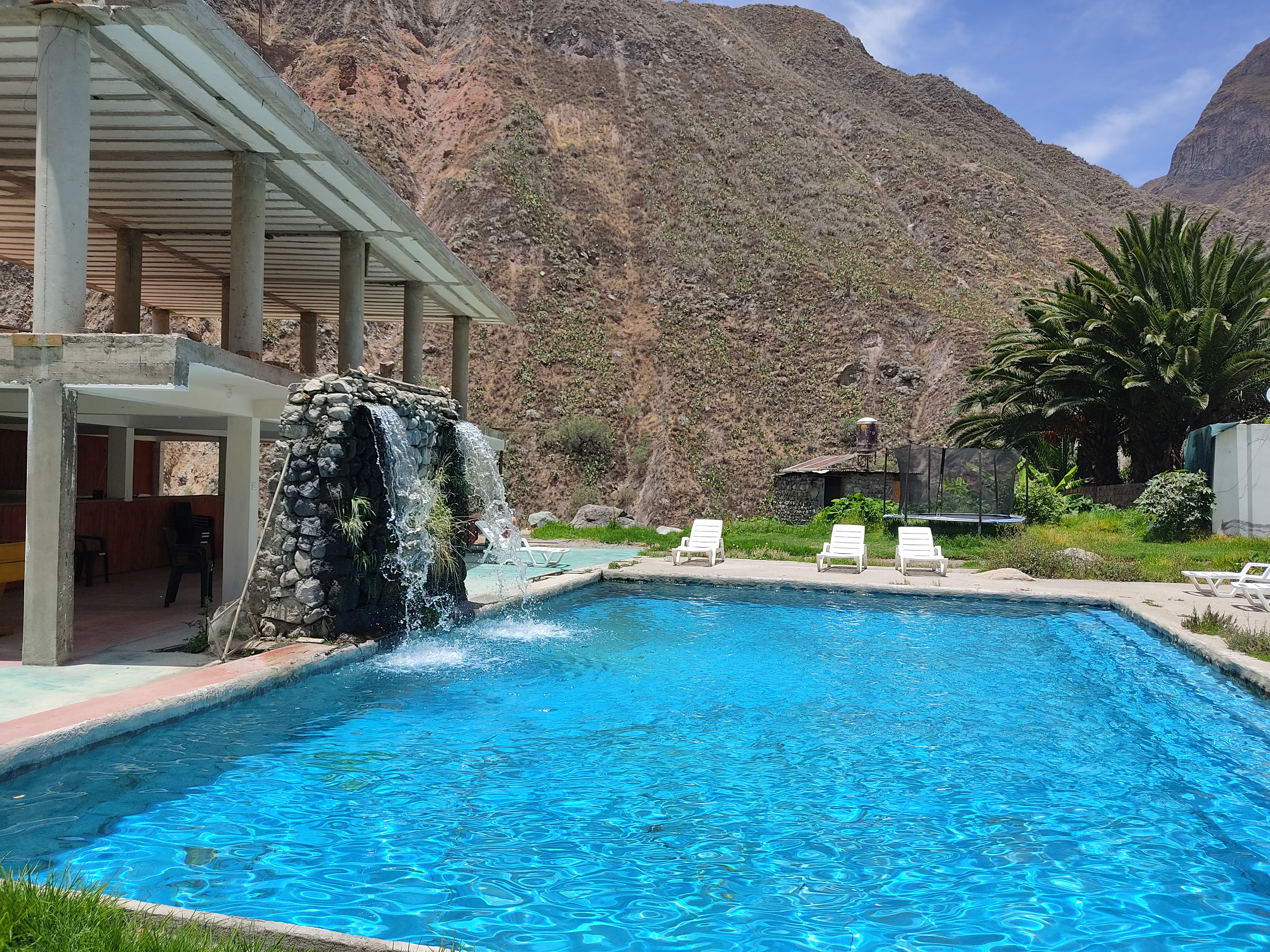
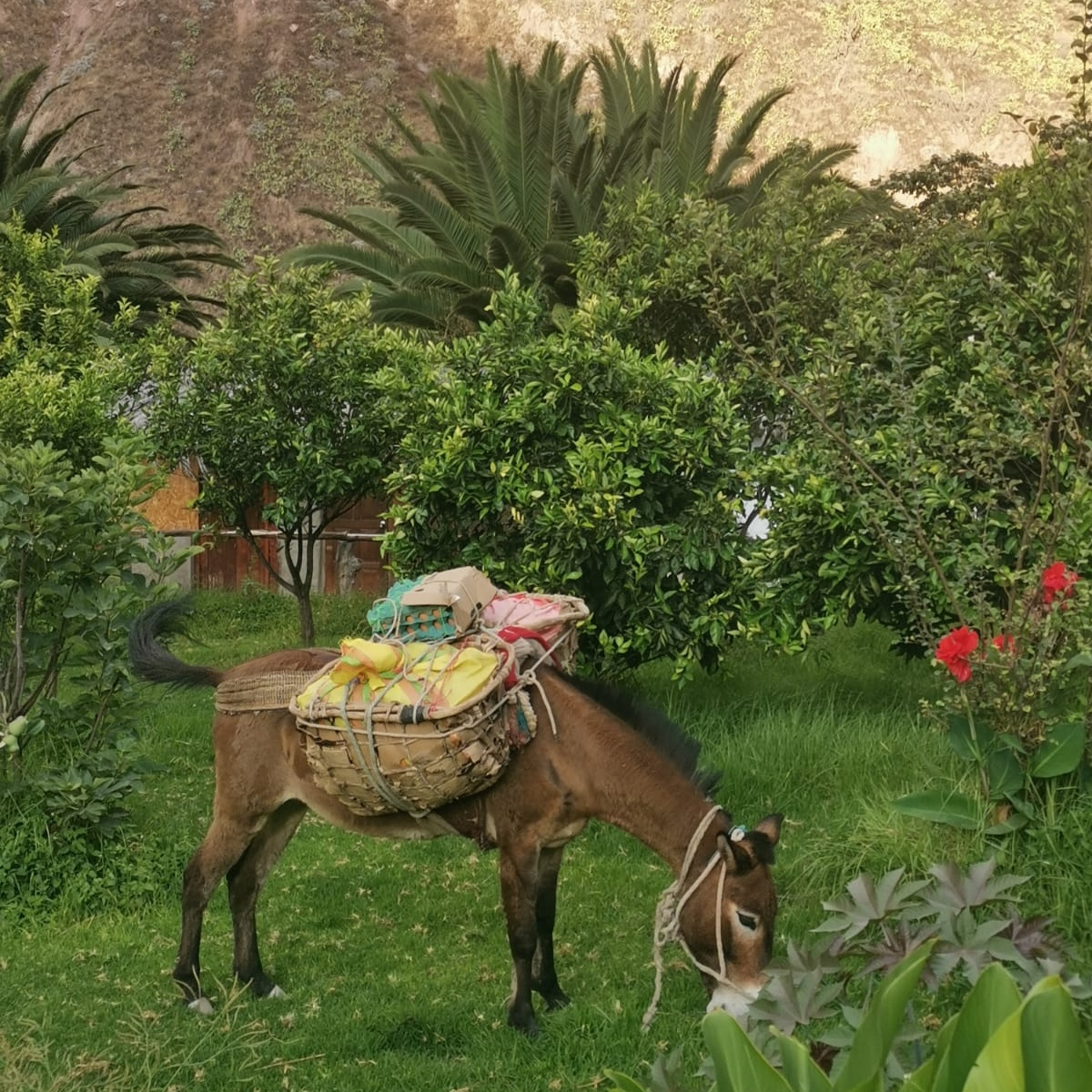
Whichever trek you do, the final day is always the same. Starting in the darkness at 5am, we began the winding 5km trail to the top of the canyon. After 30 minutes, the sun rose, iluminating the canyon walls. The 1000m of ascent usually takes between 2 and 3.5 hours, but was not as bad as we were expecting, and the view from the top of the canyon was a suitable reward. The morning sun pierced the chilly air at the top, as we made our way to a well-deserved breakfast. The final ascent takes you to over 3,200m above sea level, so altitude sickness is a genuine conern here and spending a few days in Arequipa to acclimatise beforehand is recommended. For us, this was the highest altitude we had experienced, but we managed to dodge any symptoms besides the general exhaustion of the trek!
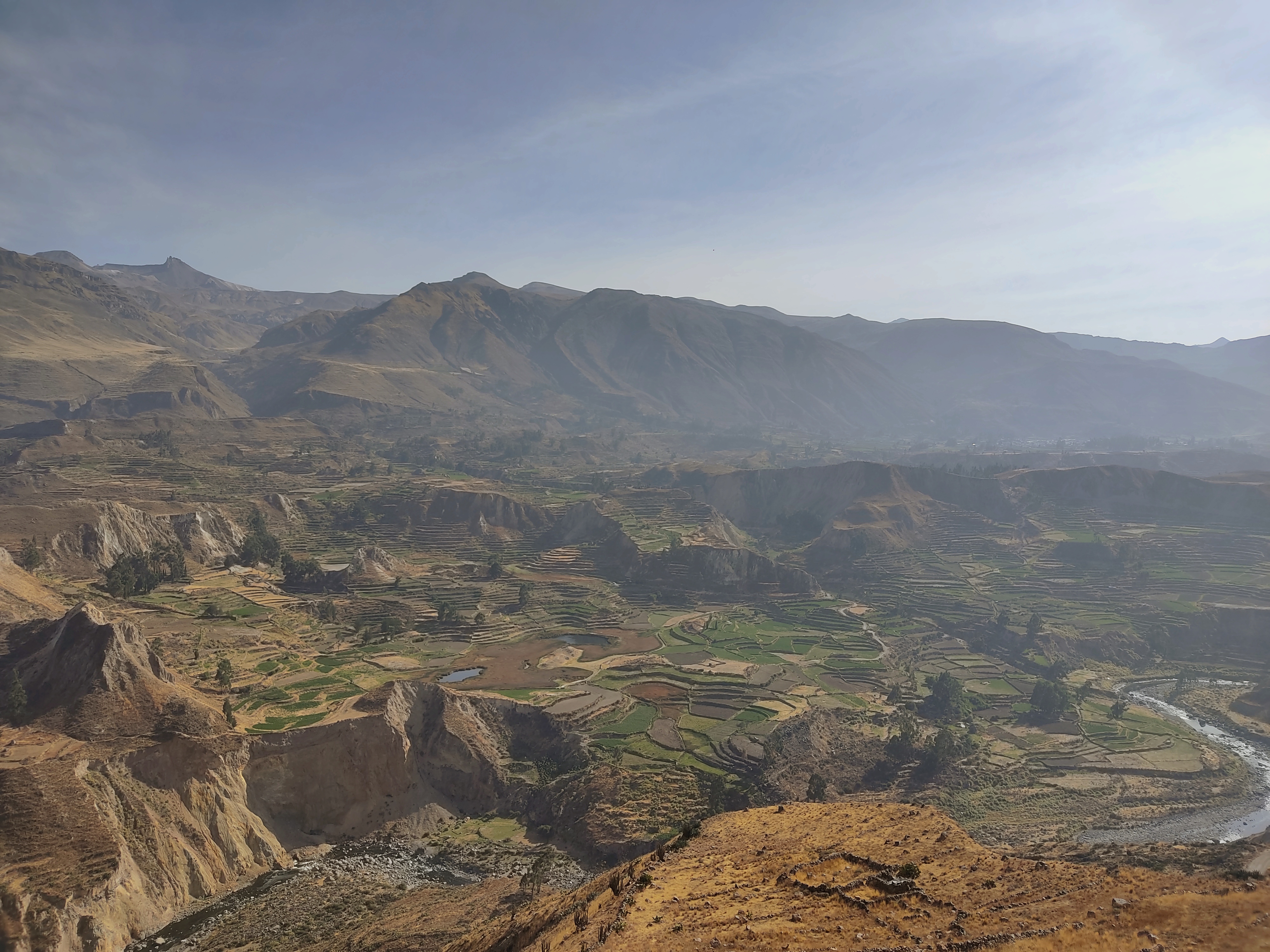
Overview
Hiking the Colca Canyon was an incredible way to experience the vastness of nature in Peru, and a good introduction to trekking at high altitude. Although the day tours were very popular, feedback from people who had been on them was not very positive, and there are certainly better day-trips in Peru that we would chose above the Colca Canyon. We would recommend reading about the different options regarding organised and independent treks to decide which suits you best. Regardless of which option you choose, the Colca canyon is an incredible destination that should find a place on everyone's Peru itinerary.
